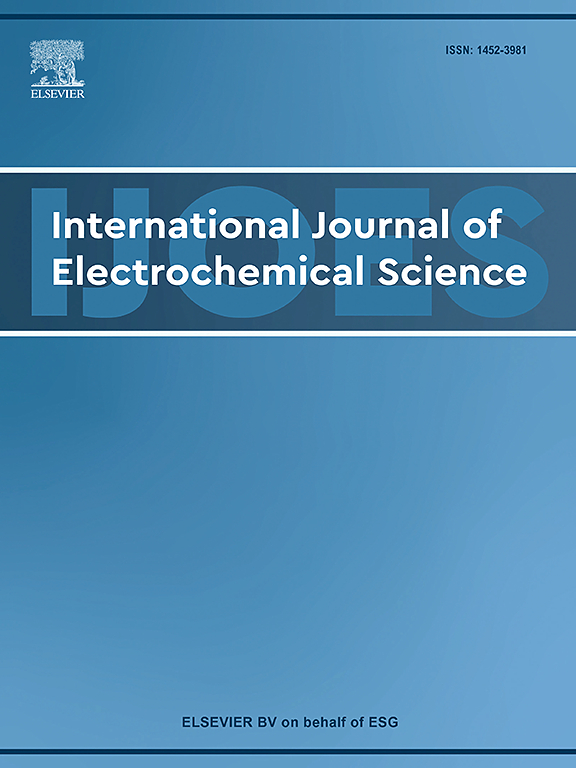Effect of reaction time on the morphology and electrochemical performance of Co₃O₄/Carbon cloth cathodes for zinc-ion batteries
IF 2.4
4区 化学
Q4 ELECTROCHEMISTRY
International Journal of Electrochemical Science
Pub Date : 2025-10-23
DOI:10.1016/j.ijoes.2025.101215
引用次数: 0
Abstract
Aqueous zinc-ion batteries (AZIBs) show great promise for applications in smart grid energy storage, power tools, and other fields. Among various cathode materials, Co₃O₄ stands out as an ideal candidate. However, while many studies have focused on the synthesis, design, and doping of cathode materials, the influence of synthesis parameters such as hydrothermal reaction time on morphology and electrochemical performance has been less explored. In this study, Co₃O₄/CC cathode materials were fabricated on carbon cloth via hydrothermal reactions with different durations: 3, 4, 6, and 8 h. The electrode synthesized over 8 h exhibited the best battery performance. It featured uniformly distributed Co₃O₄ nanowires with a regular surface and small dimensions on the carbon cloth. The corresponding Zn-ion battery demonstrated excellent rate capability and low reaction resistance. Within a voltage window of 0.01–2.2 V, the initial discharge specific capacity reached 108.2 mAh/g at a current density of 1 A/g. After 60 charge–discharge cycles, the specific capacity increased to 142.6 mAh/g, indicating good cycling stability. This work provides optimized hydrothermal reaction conditions for preparing high-performance Co₃O₄ cathodes for zinc-ion batteries.
反应时间对Co₃O₄/碳布锌离子电池阴极形态及电化学性能的影响
水性锌离子电池(azib)在智能电网储能、电动工具和其他领域的应用前景广阔。在各种阴极材料中,Co₃O₄是理想的候选者。然而,虽然许多研究都集中在正极材料的合成、设计和掺杂方面,但对水热反应时间等合成参数对阴极材料形貌和电化学性能的影响研究较少。在碳布上通过水热反应制备了Co₃O₄/CC正极材料,反应时间分别为3、4、6、8 h。在8 h以上合成的电极表现出最佳的电池性能。它的特点是均匀分布的Co₃O₄纳米线,表面规则,碳布上的尺寸小。相应的锌离子电池表现出优异的倍率性能和较低的反应电阻。在0.01 ~ 2.2 V的电压窗口内,电流密度为1 a /g时,初始放电比容量达到108.2 mAh/g。经过60次充放电循环后,比容量增加到142.6 mAh/g,具有良好的循环稳定性。为制备高性能Co₃O₄锌离子电池阴极提供了优化的水热反应条件。
本文章由计算机程序翻译,如有差异,请以英文原文为准。
求助全文
约1分钟内获得全文
求助全文
来源期刊
CiteScore
3.00
自引率
20.00%
发文量
714
审稿时长
2.6 months
期刊介绍:
International Journal of Electrochemical Science is a peer-reviewed, open access journal that publishes original research articles, short communications as well as review articles in all areas of electrochemistry: Scope - Theoretical and Computational Electrochemistry - Processes on Electrodes - Electroanalytical Chemistry and Sensor Science - Corrosion - Electrochemical Energy Conversion and Storage - Electrochemical Engineering - Coatings - Electrochemical Synthesis - Bioelectrochemistry - Molecular Electrochemistry

 求助内容:
求助内容: 应助结果提醒方式:
应助结果提醒方式:


